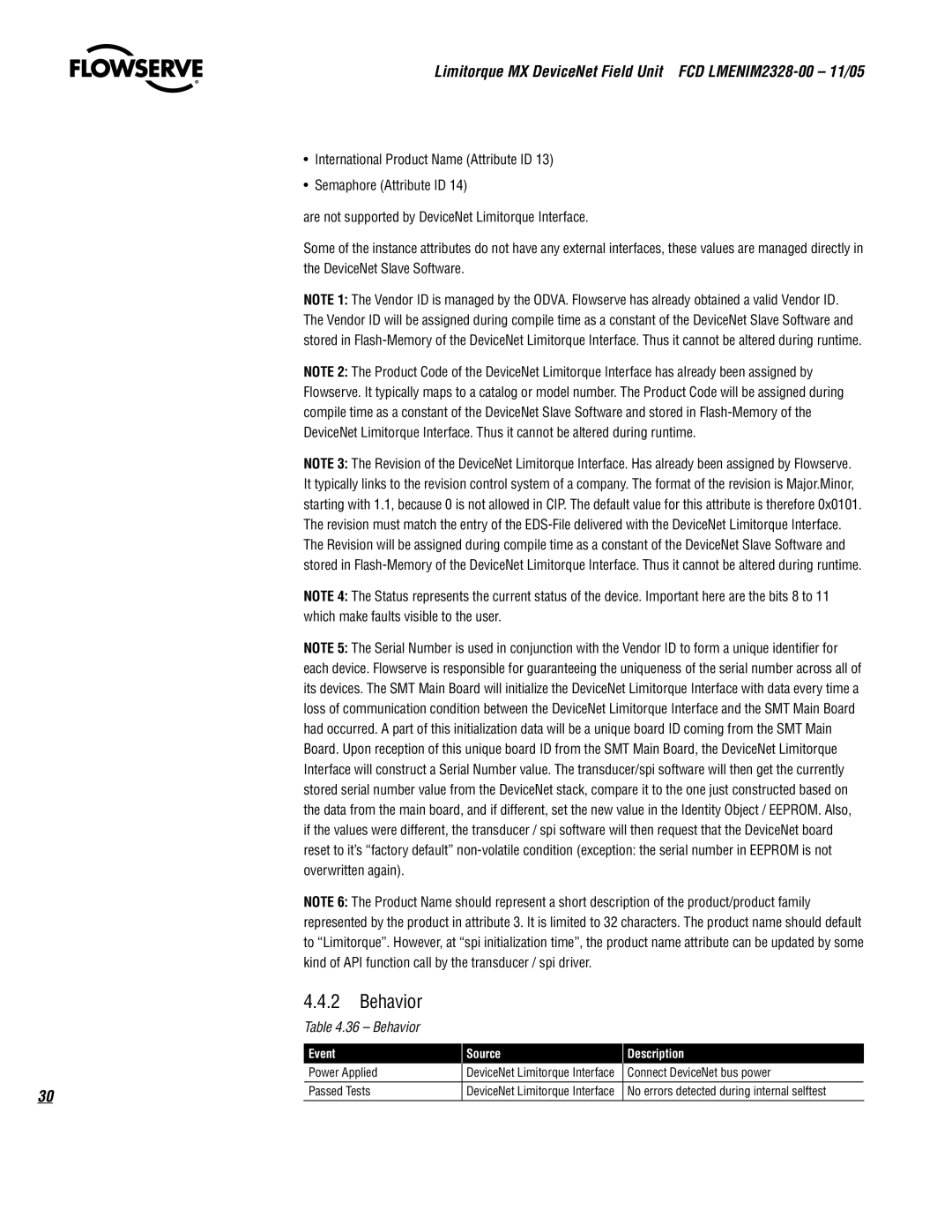
Limitorque MX DeviceNet Field Unit FCD
•International Product Name (Attribute ID 13)
•Semaphore (Attribute ID 14)
are not supported by DeviceNet Limitorque Interface.
Some of the instance attributes do not have any external interfaces, these values are managed directly in the DeviceNet Slave Software.
Note 1: The Vendor ID is managed by the ODVA. Flowserve has already obtained a valid Vendor ID. The Vendor ID will be assigned during compile time as a constant of the DeviceNet Slave Software and stored in
Note 2: The Product Code of the DeviceNet Limitorque Interface has already been assigned by Flowserve. It typically maps to a catalog or model number. The Product Code will be assigned during compile time as a constant of the DeviceNet Slave Software and stored in
Note 3: The Revision of the DeviceNet Limitorque Interface. Has already been assigned by Flowserve. It typically links to the revision control system of a company. The format of the revision is Major.Minor, starting with 1.1, because 0 is not allowed in CIP. The default value for this attribute is therefore 0x0101. The revision must match the entry of the
Note 4: The Status represents the current status of the device. Important here are the bits 8 to 11 which make faults visible to the user.
Note 5: The Serial Number is used in conjunction with the Vendor ID to form a unique identifier for each device. Flowserve is responsible for guaranteeing the uniqueness of the serial number across all of its devices. The SMT Main Board will initialize the DeviceNet Limitorque Interface with data every time a loss of communication condition between the DeviceNet Limitorque Interface and the SMT Main Board had occurred. A part of this initialization data will be a unique board ID coming from the SMT Main Board. Upon reception of this unique board ID from the SMT Main Board, the DeviceNet Limitorque Interface will construct a Serial Number value. The transducer/spi software will then get the currently stored serial number value from the DeviceNet stack, compare it to the one just constructed based on the data from the main board, and if different, set the new value in the Identity Object / EEPROM. Also, if the values were different, the transducer / spi software will then request that the DeviceNet board reset to it’s “factory default”
Note 6: The Product Name should represent a short description of the product/product family represented by the product in attribute 3. It is limited to 32 characters. The product name should default to “Limitorque”. However, at “spi initialization time”, the product name attribute can be updated by some kind of API function call by the transducer / spi driver.
4.4.2Behavior
Table 4.36 – Behavior
| Event |
| Source |
| Description |
| Power Applied |
| DeviceNet Limitorque Interface |
| Connect DeviceNet bus power |
|
|
| |||
|
|
|
|
|
|
30 | Passed Tests |
| DeviceNet Limitorque Interface |
| No errors detected during internal selftest |
|
|
|
|
|
